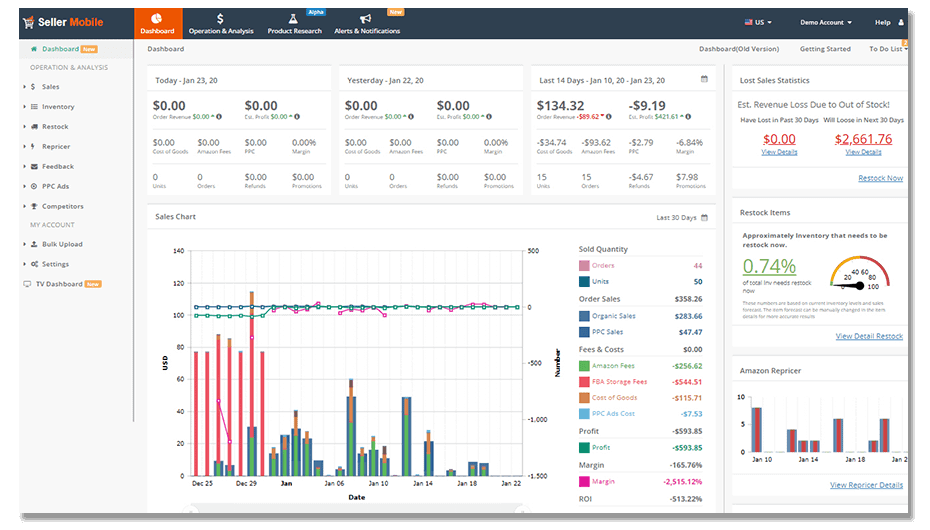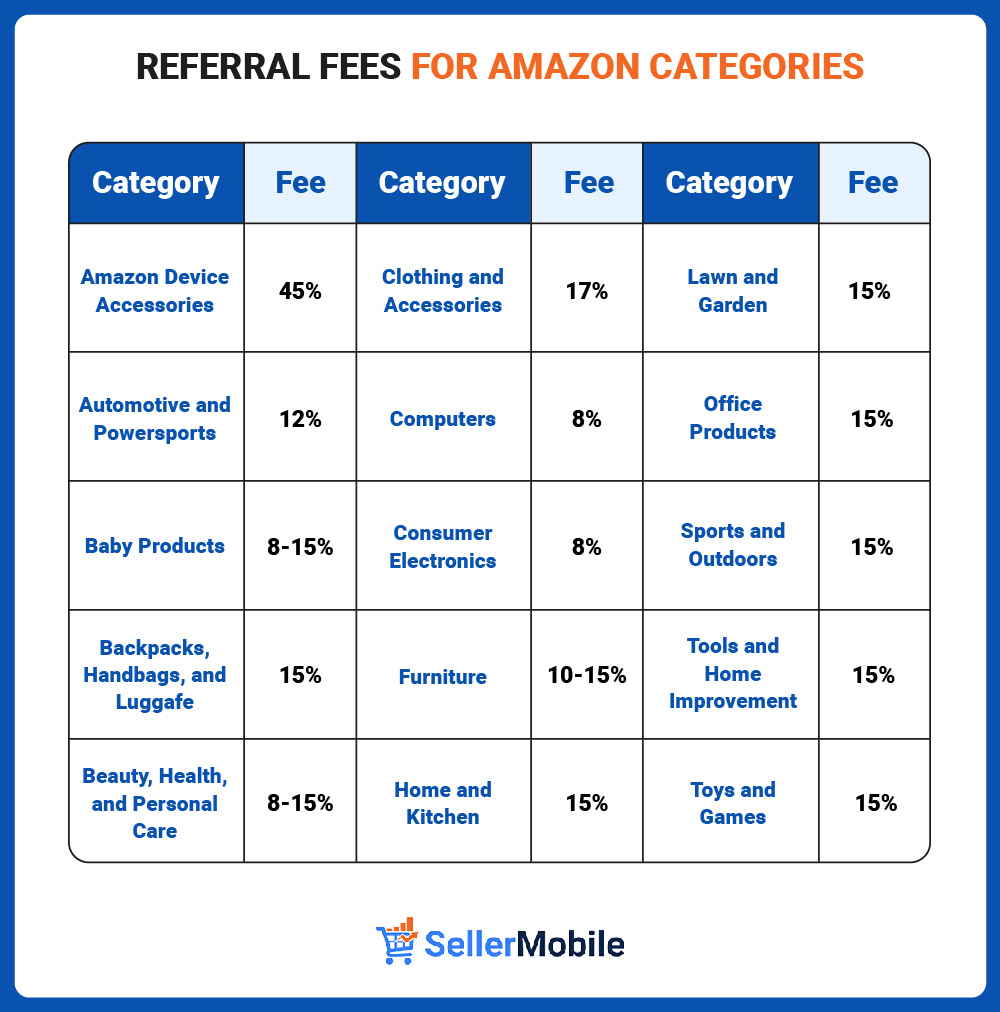Have you ever thought about the importance of choosing the right category in the world’s largest online marketplace? In the highly competitive environment of online sales, understanding the role of Amazon categories can be a game-changer for any seller.
Amazon’s total net sales during the second quarter of 2023 reached $134.38 billion. Isn’t it a good reason to start selling high-demand products? Although there is no definite answer about which category is the best, profound research and understanding of the landscape will help in making informed decisions.
So, whether you are an experienced seller or a newcomer seeking to sell more than your competitors, our guide into Amazon categories will help your business succeed.
Top Performing Amazon Categories in 2023
Amazon offers a diverse array of products to its constantly growing audience. There is no clear data on the exact numbers, but the list of Amazon categories and subcategories may reach thousands of items.
Of course, the marketplace is a dynamic platform where top Amazon categories can shift over time. The changes depend on consumer trends, some global events, or seasons. For example, some Amazon product types can become more popular before Halloween, Christmas, or other holidays. On the other hand, releasing a new gadget will definitely lead to a surge in electronics sales. This is why following market fluctuations is essential for sellers to follow the trends and identify profitable products.
According to some surveys, the 2022 top Amazon category list included the beauty and care along with the home and kitchen. Those were arguably the most profitable categories for global sellers. However, the forecasts suggest that the share of electronics will reach 28.6% by 2027. With the rapid pace of technological innovation, the demand for various devices, from laptops to smart home devices, is expected to increase.
In addition, Amazon’s expansive selection of clothes, shoes, and accessories is also included in top product category lists. Although the clothing and apparel category is far beyond electronics, these products are expected to reach 25.7% of the marketplace’s sales by 2027.
Selecting an ideal category is a tough task as the seller’s success depends on multiple factors, including market demand, competition, and business circumstances. Most likely, a newcomer has to do experiments. However, before choosing the best niche, the seller must dive deeper into Amazon’s variation policy, categories requiring approval, and other rules.
Amazon Categories Requiring Approval
If you are wondering whether you can sell anything you want, the short answer is no. The official restrictions of Amazon, also known as “gated categories,” are in place. This means some categories require approval from Amazon, adding an extra layer of security to protect the consumers. Most importantly, the sellers have to comply with some standards for products. Thus, the marketplace may ask to provide performance checks or additional fees. While the process may seem complicated, it is used to safeguard the online platform’s reputation.
To navigate these categories, the seller must provide proper documentation and adhere to Amazon’s guidelines. Professional seller accounts, sales invoices, and good performance metrics also play a role when seeking approval. Getting “ungated” on Amazon is worth trying as the seller can boost sales in a less competitive environment.
Recommended Reading
- Amazon FBA Demystified: An In-Depth Guide for Amazon Sellers
- 10 Effective Email Templates for Communicating with Amazon Seller Support
- The Best Amazon Profit Calculator: Which Items to Sell for More Money?

Some products may be entirely blocked in a certain country. For example, we can check the regulations for Singapore to see some categories requiring approval. In addition to medical devices and controlled goods, the list also includes processed food containing meat.
In general, there are some categories like “Automotive & Powersports” demanding approval because of safety concerns. On the other hand, a piece of art or a collectible coin may undergo an approval process to maintain the authenticity and value of collectibles.
Amazon Categories That Don’t Require Approval
While some categories require an approval process due to various reasons, there is a broad list of products that the seller can list without any prerequisites. When entering unrestricted categories, the sellers can quickly list their products and establish competitive pricing without any extra hurdles.
💡Pro Tip: Amazon Repricing Has Never Been Easier!
Let’s explore some Amazon categories that don’t require approval:
- Amazon Kindle
- Baby products
- Books
- Electronics
- Garden and Outdoor
- Grocery and Gourmet Foods
- Home and Kitchen
- Office Products
- Pet Supplies
- Sports and Outdoors
Amazon book categories continue to be a favored choice for customers and an ideal starting point for the future e-commerce guru. Moreover, niche markets, like specialized non-fiction, offer distinctive and lucrative selling prospects. By the way, you can even sell used books right off your shelf and turn this into a successful business.
However, sellers have to maintain the highest standards in product quality, even in the ungated Amazon categories. When a category is gated, the seller will see the “Show Limitations” button. In this case, he needs to submit an approval request to gain permission to list products. However, the online market owner can request approval with the help of a dedicated sales representative who will guide you through the process.
4 Tips to Define the Best-Selling Amazon Categories for Your Business
In the dynamic world of e-commerce, selecting the right Amazon product categories is essential. However, it is not about guessing which one would be a better fit; the seller needs a well-informed strategy to boost sales.
To stand out among the competitors, the market owner has to use some tricks to define the best categories. This is when the sellers need profound keyword research and an understanding of how to keep up with the trends on Google.
Moreover, it’s essential to use the advantages of advanced Amazon product performance tools, helping in making data-driven decisions. Our guide explores 4 tips that would help form a category selection strategy and elevate business.

1. Keyword Research for Low-Competition Products
A number one recommendation for optimization of the list of Amazon products is keyword research. The importance of the right SEO strategy cannot be overstated, as the wrong choice of words in listings may affect the search traffic and conversion rates. Relevant search terms are the driving force behind the rise in organic search results and sending the sales souring.
Therefore, start by examining what shoppers are already looking for and scrutinize the keywords your competitors are using. Research the best-seller categories that list the most popular products right now to analyze the preferences of the customers.

Another way is to focus on products with high search volume and low competition. However, this tactic requires thorough research and a good understanding of the target audience.
In general, examining the experience of the competitors is a great option to find the top-performing products. A simple step is to search for an item and inspect the keywords that competitors are using.
By the way, another easy trick is to use Amazon’s autocomplete feature to have real-time insights into what customers are searching for. When typing “kitchen mugs” in a search bar, just put a space and an auto-complete will suggest the items that the consumers usually search.

Leveraging keyword research tools is the best option to provide data on search volume, search intent, and other insights. Of course, a variety of tools offer free and paid services that come to the rescue. A popular choice is Google Keyword Planner, which would help find top-performing organic keywords. The most popular paid and free tools have numerous tutorials on YouTube, which will make it easier to choose an ideal one depending on the specific requirements.
2. Use Advanced Amazon Product Performance Tools
Leveraging product performance tools is essential for e-commerce success in today’s competitive marketplace. When picking the right option, focus on comprehensive platforms like SellerMobile to make data-driven decisions. In fact, SellerMobile is not a tool but rather a software solution stack helping Amazon sellers optimize their business and boost sales.
“What should I do to improve my business and stop losing money?”
Well, this is the most common question the seller may have, and SellerMobile does its best to explain how to make things work. The platform tracks the account’s profits, monitors the inventory, compares sales and revenue, and calculates profit to improve KPIs.

Most importantly, the tool analyzes aggregate data on multiple stores and offers data sets on the same dashboard. The sellers get real-time notifications to monitor new orders, deviations in sales, or shipment status. There are also automated alerts for negative reviews and bad seller feedback. Sellers can address issues promptly to prevent potential revenue losses and enhance satisfaction.
To sum up, it offers in-depth analytics on product performance, sales trends, KPIs, and customer behavior. This invaluable data is crucial for understanding what works and what doesn’t, allowing sellers to refine their strategies.

3. Follow Trends on Google
For those who do not have much market research experience, it’s better to start with free tools such as Google Trends when searching for the most profitable Amazon product categories in specific regions. This free tool analyzes billions of search queries and reveals search frequency trends over time. The sellers have a chance to anticipate customer needs ahead of the competition.
Let’s examine how often “paper towels” have been searched in the United States since 2004. The chart shows the interest in this search query over time, with 100 being the peak popularity for the term. The peak demand period is March 2020, which means people were more searching for paper towels during the start of the COVID-19 pandemic.

Moreover, the tool enables users to compare several products to see which was overperforming the others. In addition, Google Trends offers insights into related queries and CPC keywords while also ranking the keyword popularity across subregions and cities.

Of course, there are paid tools that offer a deeper data analysis to create a robust strategy that aligns with customer demands and market trends. However, starting with Google Trends is an easy-to-use solution that enables Amazon sellers to analyze the e-commerce landscape.
4. Go Through Amazon Consumer Trends Reports
Keeping up with consumer trends is a valuable recommendation for those seeking to define categories of products to choose from in the world’s biggest marketplace. According to reports, Amazon has 300 million active users as of 2022. Isn’t it a good reason to attentively follow all predictions and trends to watch through 2023?
The trend reports provide critical insights into emerging trends, consumer behavior, and preferences. For example, according to the assessment of the Insider Intelligence report, Amazon faces an increase in grocery e-commerce. The experts predict that grocery sales will surge by 12.9% this year, making Amazon the second largest digital grocer in the United States after Walmart, with sales reaching $29.12 billion. Any information, such as seasonal patterns and trends, can also be instrumental in stocking and selling products at the right time, maximizing their sales potential.
By the way, do you know that Amazon has over 90% of market share in 5 categories worldwide? The list includes batteries, home improvement, tools, kitchen and dining, skincare, and golf. Therefore, it’s useful to utilize any statistics and trend reports to your advantage.
FAQ
What is the Amazon Product Category Tree?
All products on the marketplace are part of a hierarchical structure that categorizes products on the platforms to make it easier for customers to find items that match their needs and interests. The tree consists of a system with top-level categories such as home and kitchen, electronics, beauty, and personal care, which are then divided into more specific sub-categories.
Thus, any item falls under categories and sub-categories, forming a tree that the sellers can effectively utilize for listing optimization. Moreover, the tree helps compete effectively, as the products are displayed alongside similar offerings.
Amazon offers a Browse Tree Guide (BTG) tool that is a set of guidelines on how to master this category tree, ensuring that products are accurately placed within it.
What are the Referral Fees for Each Category?
Each seller is charged a fee for each item sold in the marketplace. The referral fees are typically a percentage of an item’s sale price and vary by category. Regardless of the account or fulfillment plan, all individual or professional sellers pay a fee between 8% and 45%. Let’s break down some of the fees to see how it works:

There are also ways to reduce the referral fee by setting lower prices in certain categories. For example, when setting a product price in the “Baby” category lower than $10, the seller pays an 8% fee instead of 15% for more expensive items. Transition to the reduced fee is done automatically when the total price is at or below the threshold.
What is the Fastest-growing Category on Amazon?
The popularity and growth indicators of Amazon products can rapidly change due to evolving consumer trends. For instance, the COVID-19 pandemic led to a surge in online shopping for health products and home office equipment. The recent forecast suggests fashion items will rule on Amazon for the next 5 years with the expected compound annual growth rate of 12.4% from 2022 to 2027. The next on the list are the health and beauty segment, office items, electricals, and leisure and entertainment.
Anyway, to identify the most profitable among all Amazon categories, it’s crucial to monitor the reports, do market research, and follow the official announcements of the marketplace.
Conclusion
Amazon categories offer unlimited opportunities for sellers to find the most profitable niche. However, regardless of the category or product, professional sellers need performance tools like SellerMobile to adopt a smart strategy and data analysis for their online business.
This platform, with a comprehensive stack of tools, shines when it comes to optimizing operations across multiple marketplaces, monitoring inventory levels, and providing real-time feedback from customers. The sellers no longer need a digital marketing expert since this software solution monitors the profitability of ad campaigns and keeps track of ad costs. Start your free trial now to take control of your Amazon account, boost sales, and stay competitive.






